Catholic Schools Week — January 29 - February 4









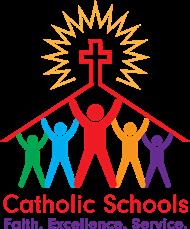

FALL RIVER — Theologian, author, and popular speaker Dr. Edward Sri will lead a virtual Biblical Walk Through the Mass for members of the Fall River Diocese on Wednesday, February 15, at 6:30 p.m.
There is no charge
to take part, but persons must register in advance to have access to the presentation to be offered via Zoom.
“As part of the initial year of formation and preparation for the National Eucharistic Revival, the Diocese is hosting this free virtual session to reinforce the importance of the Mass for Catholics and to understand better its biblical roots,” said David Carvalho, who heads up

the Secretariat for the New Evangelization in the Diocese of Fall River.
Sri, who will present the session, has written several books such as, “No Greater Love: A Biblical Walk through Christ’s Passion,” “Walking with Mary,” and
FALL RIVER — Catholic schools across the country are celebrating Catholic Schools Week, as has been the tradition since 1974. The past couple of years have been extremely challenging for all educational systems, but never before has the uniqueness of Catholic education been actively sought out by new families. According to the most recent annual report from the National Catholic Educational Association (NCEA), national enrollment in Catholic K–12 schools increased by nearly four percent for the 2021-2022 school year, the biggest enrollment increase the NCEA has ever observed.
Despite the challenges of the past couple of years, the Diocese of Fall Riv-

er Catholic schools have much to celebrate. Moreover, the diocesan Catholic Schools Office dedicates this year’s Catholic Schools
School Principal,” which encourages all families to recognize the leadership and commitment these women and men have given to the 19 Catholic schools in the Diocese of Fall River. Each school will launch a video narrated by the principal that explains the unique qualities of their school as well as the beauty of Catholic education.
Week to celebrating the principals who have led each Catholic school through these unprecedented times. Thus, this year’s diocesan theme for Catholic Schools Week is “ Rediscover Your Catholic
“ Catholic Schools Week is a wonderful way for families to learn more about Catholic education and its unsurpassable value to our country for more than 200 years,” said Daniel S. Roy, Superintendent of Catholic Schools for the Diocese of Fall River. “Our Catholic school leaders, educators, and
8 Turn to page 15
He holds a doctorate from the Pontifical University of St. Thomas Aquinas in Rome and is an adjunct professor at the Augustine Institute in Colorado. He has served as content director for a number of the Institute’s parish programs, including Symbolon: The Catholic Faith Explained and Beloved: Finding
8 Turn to page three
“Who Am I to Judge? — Responding to Relativism with Logic and Love.”Andrew Raposo, principal of Espirito Santo School in Fall River, interacts with students.

Attleboro has been a constant in the community providing Catholic education to the area for almost a hundred years. SMSH has a strong presence in
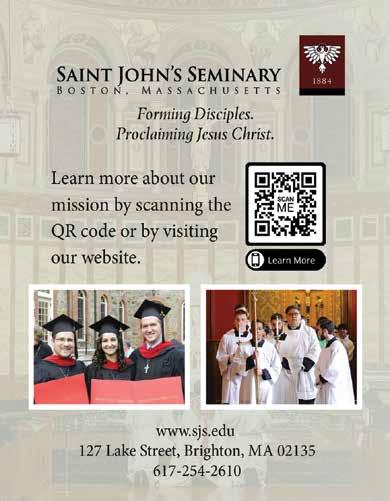


the local community, from participating in the annual town Christmas parade to having a booth set up in the downtown block party to fundraising for local charities and so much more throughout the year; the school stays involved. Family and community is a key component of what makes SMSH such a special place. Because the school teaches students pre-K through grade eight, it allows siblings to all be under the same roof for a
large portion of their fundamental education. Moreover, many of the students have parents and grandparents who were alumni of SMSH. But the family in this school is so much greater than the traditional family. Through the small class sizes, the students are given the opportunity to grow close to their peers through classroom activities, extra-curriculars and even more importantly, faith.
SMSH, also, has a
buddy program. Buddies is a beloved tradition within the school with younger grades partnering with the upper grades to partake in a variety of activities throughout the school year. Some of these times are school-wide, such as an ornament making activity where the older students partnered with a younger student to paint snowflake ornaments to be sold at their Christmas fair. While others are smaller mo-
8 Turn to page 13
continued from page one
Happiness in Marriage and was executive director of the Institute’s digital platform, Formed. org, in its initial year.
An international speaker, he presents in a variety of forums each year addressing clergy, parish leaders, catechists, and laity. He is also known from his frequent appearances on EWTN and his weekly podcast, All Things Catholic.

The National Eucharistic Revival is a three-year initiative launched last year by the

bishops of the United States to inspire and prepare the faithful to be formed, healed, and united through a renewed encounter with Jesus in the Eucharist. Each year is designed to have a different focus for formation and missionary discipleship with the overall aim of lasting impact for the renewal for the Catholic Church in the U.S.
Persons interested in Dr. Sri’s virtual presentation on February 15 may register at https://bit.ly/ReviveMass
Knights of Columbus Council 12380 held its annual Free Throw Championship on January 16 at the CYO Hall on Anawan Street in Fall
The Champions

In recent years, a number of U.S. states have legalized a new way to process human corpses that some have called “dissolving the dead.” Its technical name is “alkaline hydrolysis,” but it is also known as biocremation, aquamation, green cremation, and resomation.
The basic process involves placing a body in a heated, pressurized metal chamber and hastening its decomposition by adding lye (water mixed with a small quantity of potassium hydroxide or sodium hydroxide) to break down proteins, fats, DNA, etc. This rapidly digests the tissues of the body and reduces it to skeletal fragments. The procedure, which some claim is merely an accelerated version of what happens if you’re buried, requires three to four hours.
Afterwards, the dissolved tissue, a brown soup comprised of simple organic materials like salts, sugars and lipids, is released from the machine into a drain, then into the sewer system before it makes its way to water treatment facilities.
The leftover bone fragments inside the machine are collected, ground up and, as in standard cremation, pulverized into a powder (colloquially and imprecisely termed “ashes”), which can be given to the family in an urn.
For alkaline hydrolysis, many instinctively object that dissolving bodies in a vat of chemicals and pouring the resultant liquid down the drain is not a respectful way to dispose of our loved ones’ remains, because it seems to treat their bodies as waste to be flushed away.
Others note that standard embalming involves similar steps, as the drained blood and viscera that are extracted through the aspiration of the body cavities are also sent down the drain. The idea of flame cremation, they add, raises parallel concerns, as numerous parts of a person’s body are degraded and flare up a pipe or chimney into the atmosphere.
As a society we have laws prohibiting desecration of the human body, illegal burial, and other abuses against the human body, and we can ask whether alkaline hydrolysis or liquification of the human body raises any of the same concerns as well as whether the process meets the standard of reverent treatment of our

like cremation or alkaline hydrolysis. Neither is intrinsically evil, but each can lead to abuses and provoke misunderstandings about our human nature. In an age in which many misidentify the human person as only corresponding to the soul, without recognizing the sacredness of the human body, the Church tries to emphasize the importance of full-body burial as the best way to assure loving homage towards those who have died as well as witnessing to our belief in bodily Resurrection.
earthly remains.
Because of the novelty of alkaline hydrolysis, the Catholic Church does not yet have an official teaching that addresses the practice. Instead, the Church stresses the importance of showing careful regard for human remains and honoring the memory of the deceased. These considerations should influence our decisions as Catholics when we are offered options

Both cremation and alkaline hydrolysis, meanwhile, bring with them the potential for irreverence and a certain casualness when it comes to attending to human remains.
After cremation, rather than being reverently disposed, ashes are often kept in the attic or in the living room on the fireplace mantel, something that would never be done with a whole human body. Instead of being reverently reserved in the consecrated ground of a cemetery, our loved one’s remains may be subjected to unbefitting or even superstitious treatment. At a deeper level, do we minimize or even negate someone’s embodied human reality when we dissolve them in lye, or incinerate them in fire?
On the other hand, when the whole body is buried in the ground, there is a greater sense of connection to those mortal remains, which speak to us of the full embodiment of the person who once lived and breathed as we do, body and soul.
These notable differences in terms of according respect towards the deceased means that we should generally prefer whole body disposition of human remains, as the Church recommends, even though extenuating circumstances can allow for cremation and, until the Church formally teaches otherwise, alkaline hydrolysis. I believe it is unlikely the Church will ultimately counsel or encourage the use of this latter method for laying our loved ones to rest after death.
When alkaline hydrolysis is carried out, the same basic principles that are at work in cremation to protect human dignity should be applied. Bone fragments, powder and ashes left over from the process should be placed in a suitable container like an urn, and not scattered or divided among family members. The urn should be interred in the family plot, a mausoleum, or a columbarium. This establishes a specific point of reference in time, space and geography where we can commemorate our deceased family members. In this way, we are not only invited to respect their mortal remains, but also to pray for the repose of their souls as we mourn their passing in the hope of Resurrection and beatitude.
Anchor columnist Father Pacholczyk earned his doctorate in neuroscience from Yale and did post-doctoral work at Harvard. He is a priest of the Diocese of Fall River, and serves as the Director of Education at The National Catholic Bioethics Center in Philadelphia. See www. ncbcenter.org and www. fathertad.com.

WASHINGTON, D.C. (CNA) — Addressing thousands of people assembled on the National Mall in Washington, D.C., a man who has become famous for playing Jesus Christ on television gave credit to the real Jesus for leading him to speak out publicly, for the first time, about his Pro-Life views.
“This guy made me do it,” Jonathan Roumie told the crowd at the 2023 March for Life, pointing at

the sky. “And I’m a better man for it.”
Roumie, a devout Catholic widely recognized for playing the role of Jesus on the popular video series “The Chosen,” approached the podium January 20 to roaring cheers from the crowd. He was the topbilled of the dozen or so speakers who addressed the attendees immediately before the 50th annual march got underway.
“God is real, and He
is completely in love with each and every one of you,” Roumie told tens of thousands of marchers, many of whom clutched homemade banners and signs bearing Pro-Life slogans.
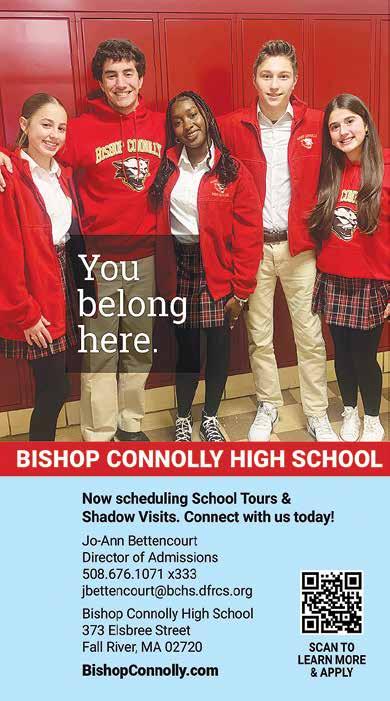
“History has been made. Life has triumphed in an extraordinary way,” he said, “and the light of world, who is Jesus Christ, the author of life, His light has burned so very brightly within each and every one of you, irrespective of your specific beliefs, compelling you forward for one reason or another to stand together today to fight for the worthiest and noblest cause possible — which is to allow the unborn the right to enter into the world, and
defeat those earthly forces who seek to destroy the very evidence of them.”
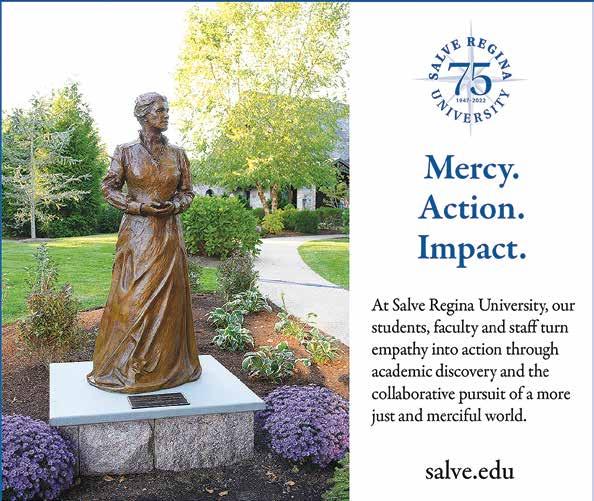
The January 20 demonstration was the first national March for Life to be held since the overturning of Roe v. Wade last June, a Supreme Court decision that did away with nearly 50 years of precedent allowing abortion nationwide. The theme of this year’s March for Life is “Next Steps: Marching into a Post-Roe America,” which emphasizes the need to continue to work toward legislation, both at the federal level and the state level, that will protect the most vulnerable.
Roumie spoke primarily about the spiritual battle that is taking place in U.S. society over abortion and urged the crowd — especially young people — to take their faith seriously in the face of resistance, including from popular culture and the media. Satan, he said, “wants us to believe that abortion is not harmful,” and those who are not grounded in a solid faith in God are “ripe for corruption.”
“Just as God is real, Satan is also real … he pushes you to doubt, when you know in your heart the

8 Turn to page 11

Sunday begins the 40th Catholic Schools Week in the United States, focused this year on how Catholic schools strive to form students for “faith, excellence and service.” It is a time for Catholics to focus on the importance of Catholic schools in the life and mission of the Church. It’s also an opportunity for society as a whole to recognize the enormous impact Catholic schools have had in the development of our country.
Catholic schools have been the engine of assimilation and advancement for tens of millions of children of immigrants, forming them not only to love our nation but to serve it with virtue and dedication. Especially in overcrowded metropolises where government schools have historically struggled, Catholic schools, connected to communities of faith, neighborhoods and larger nexuses of support and accountability, have been able to foster a culture of learning that spurred even kids from the most difficult of familial circumstances to excel, rise from poverty and become leaders in all segments of society.
Catholic schools have been able to do that not because they patented secret ways of superior pedagogy, but primarily because of the selfless dedication of religious Sisters, teaching Brothers and communities, and, more recently, lay men and women — a dedication that stood out once again during the COVID pandemic when Catholic schools were open and most government schools were virtual. Their vocations have been focused on giving children not just information but formation, seeking to help children become men and women capable in turn of fulfilling their calling to serve God, this nation, and those in need with faith and excellence. Catholic schools have made the American dream achievable for millions. This is why Catholic Schools Week should be celebrated not just by the Church but by the whole country.
Education is at the heart of the Church’s mission, a task set in motion by her Founder when He instructed His disciples to go into the whole world and teach the Gospel to every creature, educating others in what He had first taught them (Mt 28:1820). The Church’s faithful following of this divine imperative led to the establishment of the first universities deriving from the Medieval cathedral schools and the first widespread attempts to provide an education to those who had previously been excluded, from the poor, to orphans, to girls, to people in missionary lands where no formal schooling had ever existed.
Today the Catholic Church globally runs 73,580 kindergarten programs educating more the 7 million children, 96,283 Catholic elementary schools educating 33.5 million girls and boys, 47,415 Catholic secondary schools educating 24.8 million teens and Catholic colleges and universities giving tertiary education and terminal degrees to 2.7 million more. This great educational mission has flourished in the United States more than in any other country in Church history. Today there are 5,938 Catholic schools across the USA, educating a total of 1,688,417 children, saving tax payers 22.7 billion dollars a year. Even though American Catholics comprise only six percent of the global Catholic population, the United States has 13 percent of the Catholic institutions of higher learning throughout the globe. This is an incredibly rich legacy and an impressive foundation for the continued diffusion of the mission entrusted by Christ to the Church.
But the real benefit is not just in the numbers, but in the type of education im-
parted. While there is no specifically “catholic” way to teach math, science, English, or social studies, each is taught within a greater context, because the laws of mathematics and science reflect God the Creator’s order, language is given so that we can communicate with each other and with God, history is taught so that we can build on the good done in the past and avoid the mistakes and sins. Students receive more than instruction for their brains, but rather an “integral education” geared toward forming their souls and their character.
Today, this advantage stands out all the more because of an aggressive secularism that has taken hold in much of public education, where the minds and souls of young people are often being poisoned by curricula with fundamentally erroneous ideas on human anthropology, marriage and family, ethics, life and love.
As recently departed Pope Benedict XVI stated prophetically 15 years ago, “There is talk of a great ‘educational emergency,’ of the increasing difficulty encountered in transmitting the basic values of life and correct behavior to the new generations. … Relativism has become a sort of dogma. … For this reason, education tends to be broadly reduced to the transmission of specific abilities or capacities for doing. In this way we are not offering to young people … what it is our duty to pass on to them:… the true values that give life a foundation. This situation … ignores the essential aim of education, which is the formation of a person to enable him or her to live to the full and to make his or her own contribution to the common good.”
Education is far more than instruction or the transmission of particular skills. As the Latin word edúcere indicates, it means leading people out of the darkness of ignorance into the light of knowledge, from immaturity to true maturity. It’s aimed not just at helping people become smarter, but wiser. It involves not just imparting information but formation, assisting them to seek the truth, come to know it, and come to live in accordance with it. Its goal is not just to help them become intelligent men and women but genuinely good persons.
But even if public schools and popular culture were still able to provide a solid ethical formation for the young, the value and uniqueness of a Catholic education would still stand out, because the most distinctive aspect of Catholic moral formation is that it can be done with explicit reference to Jesus Christ. Catholic schools can introduce the student not merely to “moral values” but to their Source.

In Catholic education, students can be introduced not only to the truths of math, science, history, and language, but to Truth incarnate (Jn 8:32). They find not just smaller classrooms, but a divine Master who tutors everyone individually. They are taught not just in a safer environment, but where a Shepherd protects them from the wolves and guides them safely with His familiar voice and the simple instruction “follow Me.” They are prepared not just for the SAT and for entrance into college, but for the final exam of life and for admittance, God-willing, into the college of saints. They are ultimately presented with the well-rounded geography of the real, real world, and not the flat-earth equivalent of a God-less one.
That is why all Catholics should recognize their inestimable value, celebrate them and support them as they carry out their mission to prepare the young for faith, excellence and loving service.
POSTMASTERS
Daily Readings † January 28 - February 10 Sat. Jan. 28, Heb 11:1-2,8-19; (Ps) Lk 1:69-70-75; Mk 4:35-41. Sun. Jan. 29, Fourth Sunday in Ordinary Time, Zep 2:3;3:12-13; Ps 146:6-10; 1 Cor 1:26-31; Mt 5: 1-12a. Mon. Jan. 30, Heb 11:32-40; Ps 31:20-24; Mk 5:1-20. Tue. Jan. 31, Heb 12:1-4; Ps 22:26-28,30-32; Mk 5:21-43. Wed. Feb. 1, Heb 12:4-7,11-15; Ps 103:1-2,13-14,17-18a; Mk 6:1-6. Thu. Feb. 2, Feast of the Presentation, Mal 3:1-4; Ps 24:7-10; Heb 2:14-18; Lk 2:2240 or 2:22-32. Fri. Feb. 3, Heb 13:1-8; Ps 27:1,3,5,8-9; Mk 6:14-29. Sat. Feb. 4 , Heb 13:15-17,20-21; Ps 23:1-6; Mk 6:30-34. Sun. Feb. 5 , Fifth Sunday in Ordinary Time, Is 58:7-10; Ps 112:4-9; 1 Cor 2:1-5; Mt 5:13-16. Mon. Feb. 6 , Gn 1:1-19; Ps 104:1-2,5-6,10,12,24,35; Mk 6:53-56. Tue. Feb. 7, Gn 1:20—2:4a; Ps 8:4-9; Mk 7:1-13. Wed. Feb. 8 , Gn 2:4b-9,15-17; Ps 104:1-2,27-30; Mk 7:14-23. Thu. Feb. 9 , Gn 2:1825; Ps 128:1-5; Mk 7:24-30. Fri. Feb. 10 , Gn 3:1-8; Ps 32:1-2,5-7; Mk 7:31-37.






ST. LOUIS, Mo. (CNA) — The wonders we see in the universe “should draw us out of ourselves,” an Ivy League scientist said last week, “looking out not just towards the wonders themselves and towards the truths they reveal, but also towards the source of all truths and the ultimate Creator of all things.”
Karin Öberg, professor of astronomy and director of undergraduate studies at Harvard University, said her work as a scientist has helped her to appreciate that we live in a universe that “has a beginning, a middle, and an end that’s unfolding over time.”
She also said that belief in God, far from being an impediment to scientific inquiry, actually can be helpful for scientists because of the “sure foundation” that belief in a Creator provides. Öberg herself is a convert from atheism.
“I think we should feel quite confident that having a true philosophy, and a true religion, should make it easier to make scientific discoveries, and not the opposite,” Öberg said in a January 13 speech.
Öberg delivered a the second key-
note address at the Wonder Conference, organized by the Catholic media apostolate Word on Fire, which took place in Grapevine, Texas, and attracted about 1,000 participants.
Öberg, a Swedish-born scientist who serves on the board of the international Society of Catholic Scientists, primarily studies the formation of stars and planets. The “empty” space between stars — what’s known as the “interstellar medium” — is not actually empty at all but contains vast quantities of gas and dust. Over millions of years, interstellar clouds can start to collapse in on themselves, and that is how stars form, Öberg said.
Many scientists today and in the past have been guided in their scientific inquiry by their faith, Öberg said. Father Georges Lemaître, who first proposed the theory known today as the Big Bang, helped to mainstream the idea of the universe having a beginning, and thus needing a Creator.
“I can’t help but wonder if … the reason that he had the idea, instead of some of the other brilliant scien-
tists that he was surrounded by, had something to do with his Catholicism. I mean, he already knew, by faith, that the universe had a beginning in time,” Öberg said, referring to the Catholic belief in creation as narrated in the Book of Genesis.
“And I can’t help but wonder that that made it easier for him to accept this idea … [and] there’s a reason, I think, that many atheists were very concerned about The Big Bang theory as it was being presented.”
Öberg said despite a reverence for science and the scientific method among many of her colleagues, it is important to note that the scientific method has limitations.
“There are many questions about the universe that we can ask that are not scientific … things like: What do you learn from beautiful art? What makes art beautiful?” she continued.
There exists a common idea, she said, that “you can only know if something is true if you can demonstrate it scientifically.” In reality, there are many ways of arriving at truth, “science being one of them,” but not the sole method. There are some questions — such as those of morality — that are reserved to the religious and philosophical realms. And most scientists can intuit this, she said.
“If you talk to a scientist [and ask] why they have a particular idea or hypothesis, they often say things such as: ‘It was an inspiration.’ When, at the heart of it, [the scientific method] is supposed to be a hyper-rational process,” Öberg said. Instead, “You’re basically calling on the Holy Spirit,” she said, laughing.
The rationality and order that scientists observe in the universe — and which make scientific inquiry of all kinds possible — point to a Cre-

ator that is the source of all rational thought, she continued.
“The scientific project relies on there being order and intelligibility in the universe, which is not something that science can prove that there is. It’s something that it assumes there to be,” Öberg said.
Moreover, she said, “if all we are are sort of animals that are evolved to survive and procreate, there’s no reason that that should come with a reason that’s finely attuned to finding truth.” The fact that humans are rational and seek after a high power points to our souls being “patterned on God Himself.”
The intelligibility of the universe, as scientists continue to uncover, “shows the incredible generosity of the Creator in sharing His causal powers with creation again in a way that I think would have been impossible to imagine in the pre-scientific world.”
The inaugural Wonder Conference, which took place at the Gaylord Texan Resort & Convention Center in the Dallas-Fort Worth area, was billed as an “opportunity to engage with theologians and other experts on important issues at the intersection of the Catholic faith and secular culture.”
The conference, which was funded in part by a grant from the Templeton Foundation, featured talks from both religious scholars and scientists, as well as from Bishop Robert Barron of Winona-Rochester, Minn., the founder and face of Word on Fire.
“A perceived incompatibility between faith and science has led to a rise in the number of religiously unaffiliated. This perception runs counter to the experience of the Catholic tradition, which conveys the beautiful harmony between faith and science,” the website for the conference says.
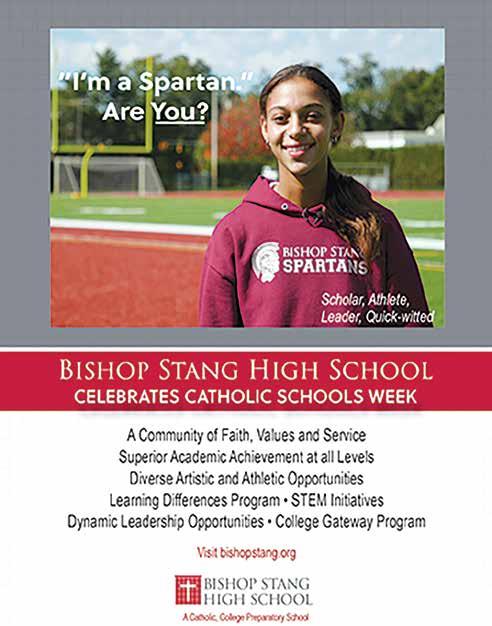
I’m not a huge Patriots’ fan, however I do enjoy relaxing on a Sunday afternoon by watching them play like just about every other person from Maine to eastern Connecticut. But I think a good lot of people in New England, and maybe throughout the country, temporarily switched their team allegiance a few weeks ago. Who didn’t hear about Buffalo Bills’ player, Damar Hamlin, who collided with another player and went into cardiac arrest during a game recently? An anxious nation held its breath and waited for updates on his condition. It looked pretty grim for a while. But a week after his injury he set off every alarm in his ICU room, not because his condition had deteriorated, but because he was so excited that the Buffalo

Bills took the opening kickoff 96 yards for a touchdown. (For non-football fans — that’s a good thing!) Ultimately, the Buffalo Bills beat the Patriots by a score of 3523.Speaking for Patriots fans everywhere, we forgive them. And really, why wouldn’t we forgive them? Hamlin’s life-threatening injury was just the latest in a series of horrible tragedies that have beset the greater Buffalo area and western New York. There was a mass shooting at a grocery store in Buffalo in May; 13 people were killed and many more injured. In
December more than 40 people lost their lives in a blizzard of epic proportions that left the area paralyzed as whiteout conditions prevented rescue personnel from coming to the aid of the stranded and helpless. And then on New Year’s Eve, five children perished in a house fire. As one local pastor said, “We haven’t really had a chance to heal.” But it’s not all bad news.

As is so often the case, we hear
a story that gives us hope, restores our faith in humankind, and reminds us of the goodness of God. Enter one Jay Withey. Withey, like so many others, found himself stranded on the road in Buffalo’s blizzard. He slept a night in his pickup truck with two strangers who were also stranded. The overnight temperature was 9°. The following morning his truck ran out of gas. “I walked to the houses to see if I could find shelter, any house that had lights on. I had $500 that I was offering, to sleep on their floor,” Withey said. He went to a dozen doors but no one would give him shelter. For the first time in his life, he feared he

8 Turn to page 10

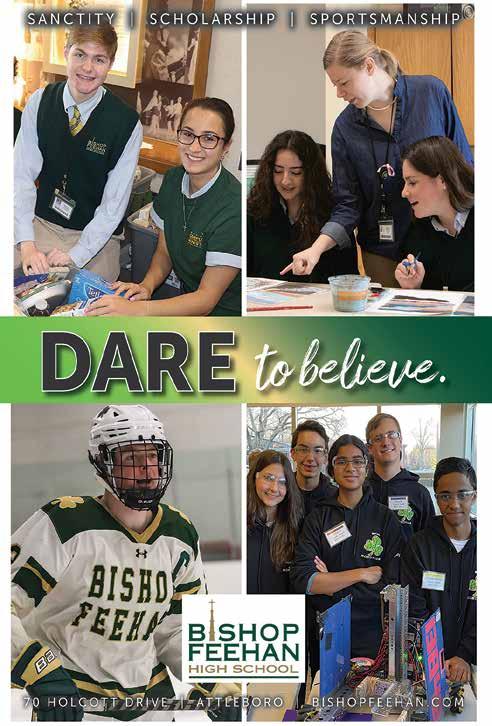
continued from page nine
was going to die.
And then, off to his left, Withey saw a school about 600 or 700 feet away. He felt sure the power would be on, that it would be heated, and he assumed that there would be food in the school, too. He smashed a window, gained entry, and then walked to other cars stranded nearby and offered the occupants refuge in the school. He rescued two dozen people including senior citizens and children, as well as two dogs.
According to the Washington Post, Withey managed to open the cafeteria and found cereal, juice, water, and coffee for the group. He cooked pizza for lunch and meatballs for dinner. The group spent the hours in the cafeteria eating and getting to know one another. They shared what Christmas meant to them, where they’d gone to school, what they did for a living and how they ended up stranded in a blizzard on Christmas Eve. “We just enjoyed that we
had shelter, we had food and we had a new family,” one survivor said. “On Christmas morning, we all woke up and said ‘Merry Christmas’ to everybody.”
Withey has been hailed as a hero by single-handedly saving the lives of 25 people on Christmas Eve in the midst of that raging snow storm. As the storm moved away from the area late Christmas Day, Jay Withey did one more act of kindness: he found the school’s snowblower and cleared all the vehicles that belonged to members of his “survival pack.” Before leaving the school, he wrote a letter of apology for breaking a window to gain entrance to the school, and wished everyone a Merry Christmas.
Do Withey’s actions and res-
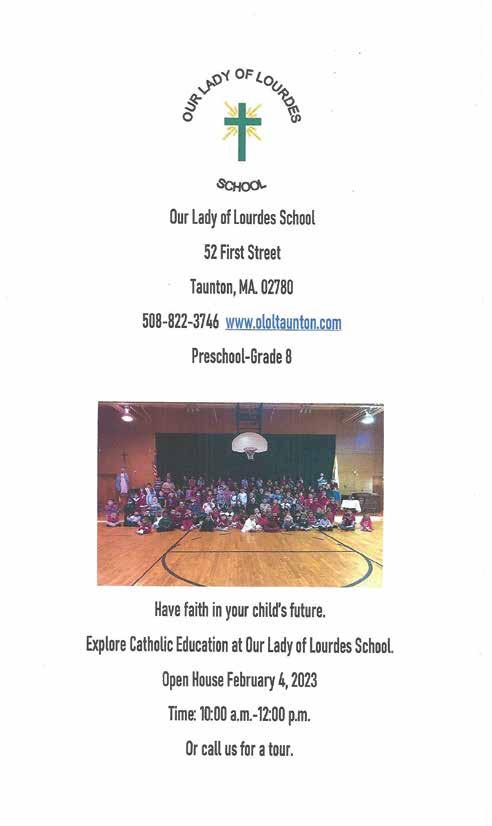
cue of those people qualify as a Christmas miracle? It’s not for me to say, but here’s what I do know. One man, acting out of courage, compassion, and conviction, was Christ to those who could not help themselves. I know the Bills won’t win the Super Bowl now, having lost to Cincinnati on January 22. But whether or not the Bills made it to the big game, there’s one thing I’m sure of — Buffalo’s real winner is Jay Withey. And that my friends, is the Good News!

Anchor columnist Ada Simpson is former editor of Ministry and Liturgy magazine, holds an M.A. in Pastoral Ministry, and is the director of Music Ministry at St. Francis and St. Dominic parishes in Swansea.
January 27, 2023
continued from page five
right thing to do,” Roumie warned.
While Roumie grew up Catholic, he has spoken openly about the deeper conversion he experienced around four-and-a-half years ago, when he began to grow in his faith. Roumie said that “dwelling in the realm of spirit” has changed him “from the inside out.” Practicing one’s faith, you “begin to see the truth manifest itself in all areas of your life,” and you “can’t unsee what you’ve seen.”
As Christians, Roumie said, “we know how the story ends. God won.” He encouraged those listening to emulate Jesus by seeking to love and pray for their enemies and those who disagree with them. In concert with prayer, Roumie said those present have the ability to affect a Pro-Life culture and “reveal God’s truth” by using their “financial, spiritual, and temporal” resources.
“We are beautifully flawed, but not alone,” he encouraged. “God is love, and true love gives way to life, not death.”
Roumie’s fellow speakers at the 2023 March for Life addressed the march’s theme, “Next Steps.” They spoke to the attendees about the importance of building a culture, both legislatively and in each person’s personal life, of support for women and babies.
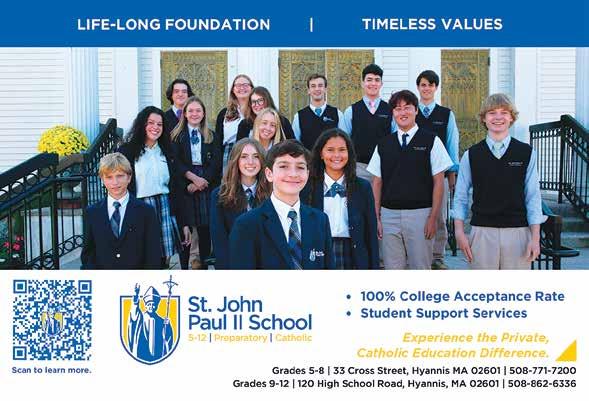
Tony Dungy, former coach of the Indianapolis Colts, father of 11, NFL analyst, adoptive dad, New York Times bestselling author, and Pro Football Hall of Famer, took the stage to speak about the recent health scare of NFL player Damar Hamlin, and the public outpouring
of prayers that took place when it appeared that Hamlin’s life was hanging in the balance.

Unborn babies are not as visible and well-known as famous athletes, Dungy said, but “those lives are still important to God.”
Saving their lives is “not the end of the story,” though — mothers and babies need our help, he said. Dungy’s wife, Lauren, took the stage and spoke about their adoption experience alongside the couple’s now 21-year-old daughter.
“We are talking about lives,” Lauren Dungy said. “We need to pray for every woman who is in this situation. ... We have to pray that we have enough adoptive families to pray for these precious lives.”
Summer Smith, a student at Liberty University, spoke about the importance of supporting women in need, especially at crisis pregnancy centers.
“For me, being Pro-Life is personal,” she said, relaying the story of how she found out that one of her own siblings was aborted.
“Speak up about abortion in your family, your friend group, and on your campus. And speak up with love,” Smith said. “Our faith must be well-rea-
soned and well-informed.”
The speeches even included one from the daughter of a canonized saint, St. Gianna Beretta Molla. Molla, a doctor, became ill while pregnant with her fourth child and was encouraged to abort the baby in an attempt to save her own life. Molla chose life and passed away a few days after giving birth. In 1962,
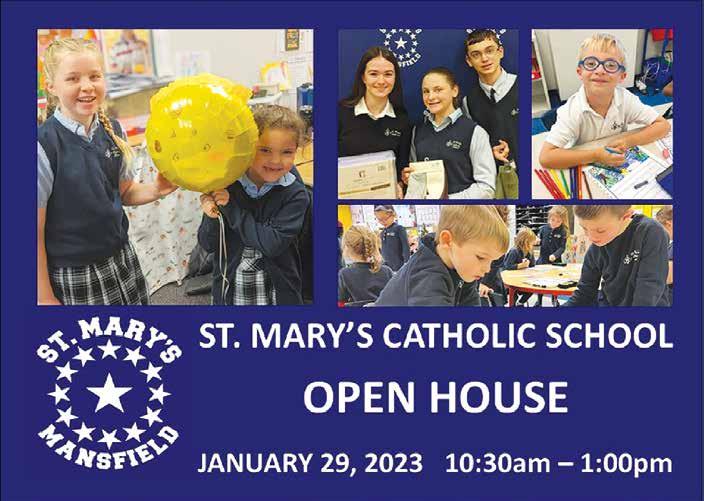
she died at 39 years old.
“I would not be here with all of you, if I had not been loved so much!” the saint’s daughter, Gianna Emanuela Molla, who is also a medical doctor, told the crowd.
Sister Mary Casey O’Connor, S.V, and her twin sister who has down syndrome, Casey Gunning, spoke at the March for
Life Rally. “I came from all the way from Colorado to announce to America and to the whole world that life is good and that life is a gift!” Casey Gunning said, drawing loud cheers from the crowd.
“Your child will be a blessing to you and to the world,” she said, referring to parents with children who have Down syndrome.

From the Cradle to the Cross is a painting by a person whose life was scattered instantly in an accident. This person, a National Council on Disability member, helped draft The Americans with Disabilities Act, authored 35 books, accepted a presidential appointment, spoke in more than 45 countries, established a disability ministry that reaches around the world and produced numerous paintings and drawings with her mouth. This remarkable woman is Joni Earckson Tada. She was only 17 years old when she was paralyzed due to a diving accident, but all that she accomplished has been a testament of her words: “Perspective is everything when you are experiencing the challenges of life.”
Joni is now a 73-year-old who not only turned her mess into a message via the grace of God but has also survived bouts with cancer. Her youthful energy and passion for the Gospel can be attributed to Jesus, the Great Optometrist.
All those who have 20/20 vision may not understand the following rant but read along as you may find yourself in solidarity with those of us who wear glasses.
Only a select few will understand the struggle of navigating at night with glasses. It is like driving through a firework show on the Fourth of July. The eyes see light like we are traveling in the Millennium Falcon going less than 12 parsecs on the interstate. Yet once a year we get the chance to prove our sight has changed and we go through crucible of eye exams. This is one of the most anxiety provoking exams since the SATs, because your whole social life revolves around passing that crucible. Air puffs in eyes, vanishing pixelated barns, blinking disappearing and reappearing fuzzy lights, the extremely claustrophobic personal space proximity test, where the doctor gets closer and closer and even closer with a miniature flashlight demanding you do not blink as the doctor’s breath sud-
denly becomes yours. The crucible, however, is not done because we, like Daniel, need to read the writings on the wall. Then the coup de grace: a giant futuristic contraption that is designed to confuse your grasp on reality as you decipher which lens is really better. When the optical boot camp is complete, a script is written, and we can now order your 4D optical illusion glasses at the front. With these frames we will now be able to operate our vehicles and navigate confidently. That is until the typical route is detoured, due to construction and it’s nighttime. All confidence is lost and suddenly it’s like taking a driving exam all over again.
Everyone can relate to this because change in route can simply be translated to change in life routine and suddenly blurry vision makes a world of sense. Discerning God’s will, situational anxiety, life changes, financial problems, career decisions are just a few major stressors that can create a cripplingly distorted view on life as our focus is on something we cannot see clearly. Unregulated or treated, these distortions can create a pathway to despair. But there is clarity at the end of the distortion and light at the end of darkness. Jesus, the Great Optometrist, through salvation history provided humanity different opportunities to prove they see clearly, and He ultimately became our light in the darkness.
Some claim that Catholicism is a faith of the books. In other words, our belief is contingent on our ability to comprehend the Bible and the “Catechism.” Yet that misunderstanding goes to show the world’s vision about our faith is not as crystal clear as they think. Catholicism is a faith of the
Word; that is the Word of God that is revealed to us via sacred tradition and Sacred Scripture. Furthermore, we do not merely just believe the word but believe in the Word of God made man. Therefore, we trust and do not fall victim to beliefism (simply believing something exists without believing in that thing).
That is why the words of Jesus, the Word made flesh, challenges our perspective on faith to go beyond the words and embrace Him who is the Word.
If an optometrist checks to see what adjustments are needed for the physical eyes to see clearly, then would it not be useful to check if your spiritual eyes need adjusting? As Catholics we believe that God reveals Himself because He “desires all men to be saved and to come to the knowledge of the truth, ‘That is, of Christ Jesus’” (CCC# 74). This revelation is transmitted through Divine Revelation via sacred tradition and Sacred Scripture. The “Catechism” states the following:
“This living transmission, accomplished in the Holy Spirit, is called Tradition, since it is distinct from Sacred Scripture, though closely connected to it. Through Tradition, the Church, in her doctrine, life and worship, perpetuates and transmits to every generation all that she herself is, all that she believes. The sayings of the Holy Fathers are a witness to the life-giving presence of this Tradition, showing how its riches are poured out in the practice and life of the Church, in her belief and her prayer (78) ... Sacred Tradition and Sacred Scripture, then, are bound closely together, and communicate one with the other. For both of them, flowing out from the same
divine well-spring, come together in some fashion to form one thing, and move towards the same goal” (CCC #78, 80).
Just because our God reveals Himself, however, does not necessarily mean we all can see it. Therefore, I suggest the following “eye” exam. Read the following Scripture passage, “Catechism” paragraph, and quotation from a Church father. The goal of this exam is to adjust perspective in order for these three messages to “come together in some fashion to form one thing and move towards the same goal.”
We recently ended the beautiful liturgical seasons of Advent and Christmastide, and soon we will be making our desert journey through Lent. Let this Ordinary Time be one when as our perspective changes and faith is deepened, as we go from the Cradle to the Cross.
The Prescription:
“For I know well the plans I have in mind for you — oracle of the Lord — plans for your welfare and not for woe, so as to give you a future of hope” (Jer. 29:11).
“The virtue of hope responds to the aspiration to happiness that God has placed in the heart of every man. By hope we desire, and with steadfast trust await from God, eternal life and the graces to merit it” (“Catechism of the Catholic Church” 1818, 1843).
“So by fixing our hope up above, we have set it like an anchor on firm ground, able to hold against any of the stormy waves of this world, not by our own strength but by that of the One in whom this anchor of our hope has been fixed. Having caused us to hope, after all, He will not disappoint us, but will in due course give us the reality in exchange for the hope” (St. Augustine, Sermon 359A, 1-4).
Anchor columnist Oscar Rivera Jr., is director of Youth Ministry in the diocesan Secretariat for the New Evangelization. orivera@ dioc-fr.org
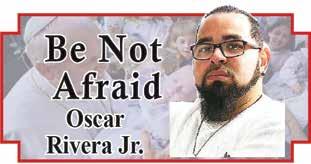
continued from page two
ments, such as the eighth grade meeting with their first-grade buddies to give
words of encouragement before the first-grade had a performance. The buddy
program allows the younger students to make bonds with the older kids that they hold onto and remember all throughout their time at SMSH until it is their turn to be the big kid.
of Fall River
Mass on the Portuguese Channel
Sunday, January 29 at 7 p.m.
Broadcast from St. Francis Xavier Church in East Providence
Diocese of Fall River TV Mass on the Portuguese Channel
Sunday, February 5 at 7 p.m.
Broadcast from Santo Christo Church in Fall River
Diocese of Fall River TV Mass on WLNE Channel 6
Sunday, January 29 at 11:00 a.m.



Celebrant is Father Michael Racine, Pastor of the parishes of Whaling City Catholic Community: Holy Name of the Sacred Heart of Jesus, St. Francis of Assisi, and St. Lawrence Martyr, all in New Bedford
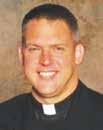
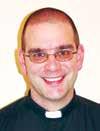
Sunday, February 5 at 11:00 a.m.
Celebrant
As the community around the school changes, many of the long-standing traditions of the school continue to thrive and act as a rite of passage for these young Saints. The Catholic faith plays a large part in many practices that have been long passed down from one generation of students to the next.
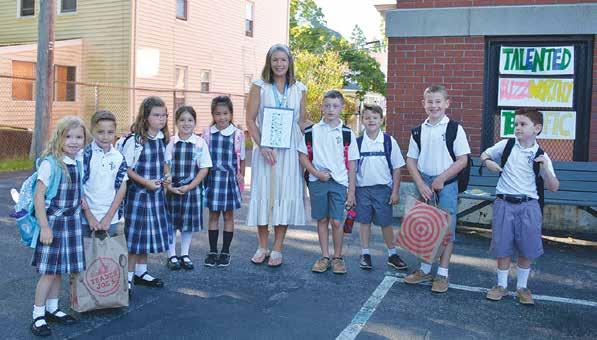
From the beginning of their time at SMSH, students become active participants in their school-wide
Masses, and other special holy day activities. Starting as young as Kindergarten, the Saints perform a Christmas pageant for their family. Then, in first grade, the students research and transform into a Saint to share what they have learned about their saint during the schoolwide All Saints’ Day celebration. In fourth grade, the students present a reenactment of the Stations of the Cross. There are bigger productions that build connections between the students, their peers and their faith like the thirdgrade Christmas pageant. The Christmas pageant itself is performed by the third-grade class; but an integral part of the story-
telling is the music that is sung by students from second to eighth grade. Everything that SMSH does is to build a greater sense of community through faith.
Alumni look back on all of these things fondly— often able to remember their lines from the Kindergarten play, which Saint they were for All Saints Day, or their first solo in the Christmas choir. There are more moments like these that the students get to participate in every year; the younger students waiting for it to be their turn up the altar getting to participate just like the older kids did. The richness of tradition found in Catholic schools is what makes SMSH SMSH!
FALL RIVER — Florence B. Pregana, 86, of New Bedford, died peacefully on Monday, January 9. She was the wife of the late Arthur C. Pregana for 59 years. Florence was born in Fall River to Arthur and Regina Bartlett. She was the youngest of eight children and attended St. Mathieu Parish School. She was a member of Our Lady’s Sodality and sang in the church choir. Her family was active in St. Mathieu’s and it was there that she married Arthur on May 10, 1958.


Following their marriage, they lived in Fall River and bought their first home on Bradford Avenue with her sister Rita and husband Bob Berube. There Florence and Arthur raised their three children and were active members in St. Louis Parish, in particular the Social Club

and the St. Vincent de Paul Society. Florence worked all her life and retired after 25 years from Pediatric Associates of Fall River. In her retirement, she volunteered with Arthur at Sts. Peter and Paul School to be near their two grandchildren.
She is survived by three children: Father Craig A. Pregana, Pastor of St. John the Evangelist Parish in Attleboro; Gail and Jeffrey Souza; and David Pregana and Tucker McNulty; two loving grandchildren, Jameson and Gabrielle Souza; her brother, Arthur Bartlett; and many nieces and nephews. Besides her parents and husband, Florence was predeceased by her sisters: Eva Michel, Rita Berube, Blanche Soucy, Theresa Bouchard, and her brothers: Normand and Louis Bartlett.
A Mass of Christian Burial was celebrated at St. Thomas More Church (Our Lady of Peace Parish), Somerset on January 14.
Donations in Florence’s name may be made to Bishop Connolly High School Pregana Scholarship Fund, 373 Elsbree Street, Fall River, Mass., 02720.
Arrangements were handled by Auclair Funeral Home, Fall River.
Please pray for these priests and deacons during the coming weeks:
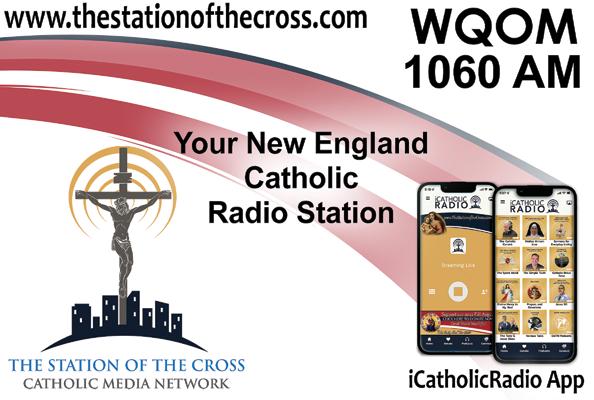
Jan. 28
Rev. Joseph M. Griffin, Pastor, St. Mary, Nantucket, 1947
Rt. Rev. Msgr. John J. Shay, V.F., Pastor, St. John the Evangelist, Attleboro, 1961
Jan. 29
Rev. Christiano J. Borges, Retired Pastor, St. John the Baptist, New Bedford, 1944
Rev. Albert J. Masse, Pastor, St. Joseph, Attleboro, 1950
Jan. 30
Rev. Peter A. Carlin, 1880
Rev. Raymond F.X. Cahill, S.J., Assistant, St. Francis Xavier, Hyannis, 1983
Rev. Sebastian Slesinski, O.F.M., Conv., 2006
Rev. Raul M. Lagoa, Pastor, St. John of God, Somerset, 2012
Jan. 31
Rev. Charles J. Burns, Pastor, St. Mary, North Attleboro, 1901
Rev. William F. Sullivan, Pastor, St. Patrick, Somerset, 1930
Rev. Manuel C. Terra, 1930
Rev. William J. Shovelton, Retired, Former Pastor, St. William, Fall River, 2015
Feb. 1
Rev. Msgr. Michael J. O’Reilly, Pastor, Immaculate Conception, Taunton, 1948
Rev. Msgr. Patrick H. Hurley, V.F., Pastor, St. Joseph, Taunton, 1968
Rev. Anatole F. Desmarais, Pastor, St. Jacques, Taunton, 1975
Rev. Msgr. Gerard J. Chabot, Pastor, St. Theresa of the Child Jesus, South Attleboro, 1983
Rev. William F. O’Connell, Pastor, Holy Name, New Bedford, 1995
Rev. Arthur T. DeMello, Retired Pastor, St. Elizabeth, Fall River, 2004
Rev. Albert J. Ryan, Retired, U.S. Air Force Chaplain, Former Pastor, St. Francis of Assisi, New Bedford, 2015
Feb. 2
Most Rev. William Stang, D.D., First Bishop of Fall River: 190407, 1907
Rev. Patrick F. McKenna, Pastor, Immaculate Conception, Taunton, 1913
Rev. John L. McNamara, Pastor, Immaculate Conception, Fall River, 1941
Rev. P. Roland Decosse, Pastor, St. Hyacinth, New Bedford, 1947
Rev. Daniel F. Morarty, Assistant, St. Brendan, Riverside, R.I., 1991
Feb. 3
Rev. Antonio O. Ponte, Pastor, Our Lady of Angels, Fall River, 1952
Feb. 4
Rev. Msgr. Hugh J. Smyth, P.R., Pastor, St. Lawrence, New Bedford. First Vicar General, Fall River, 1904-07. Administrator of Diocese, February-July 1907, 1921
Rev. Raymond Graham, S.M.M., 1988
Feb. 6
Most Rev. Frederick A. Donaghy, M.M, Bishop of Wuchow, 1988
Feb 7
Rev. Arthur N. Robert, O.P., St. Anne Shrine, Fall River, 1991
Rev. Robert S. Kaszynski, 2014
Rev. José Antonio Ferreira dos Santos, Retired, Former Pastor, Our Lady of Health, 2017
Feb. 8
Rev. Raymond P. Monty, USAF Retired Chaplain, 1996
Feb. 9
Rev. Francis Tuite, 1916
Rev. Msgr. John J. Kelly, Pastor, SS. Peter & Paul, Fall River, 1963
Rev. Peter J. McKone, S.J., Bishop Connolly High School, Fall River, 1972
Rev. Vincent R. Dolbec, A.A., Assumption College, 1985 Feb. 10
Rev. Edward L. O’Brien, Pastor, St. Mary, Mansfield, 1966
Rev. Lucien A. Madore, Retired Chaplain, Mount St. Joseph School, Fall River, 1983
some sort of accommodations for students who learn differently. While Catholic schools across the country have weathered many challenges over the past few decades, there is no doubt that Catholic schools are still valued and necessary in today’s educational landscape. Whether a family’s interest in Catholic education is due to the rigorous academics, or for the formation of the whole child, Catholic schools continue to provide students and families with a faith-filled community that lives the teachings of Jesus Christ every day. For more information about the Catholic Schools Alliance or to view principal videos, please go to www.catholicschoolsalliance.org/ catholic-schools-week-2023.
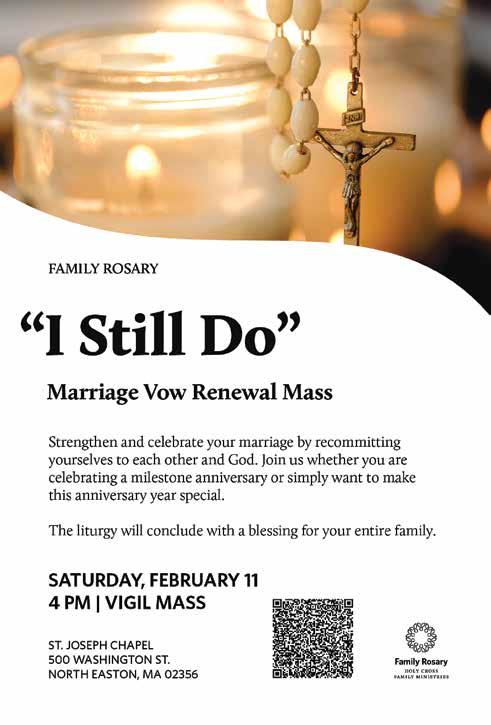
continued from page one
staff members embrace a mission that endures with a new relevance in our time. I welcome all families to view the principals’ videos as a way to get to know our leaders, encounter our schools, and share our excitement for the excellent work that they do.”
According to Anne Dailey, principal of St. Pius X School in Yarmouth, “Our children have just lived through a very difficult two years. Not only have they faced the pandemic, they face a society where there is a lot of tumult which creates a situation where you need serenity. Our students need a place where they are going to be guided by their faith as well as a safe place where they will be taught values and a Catholic school setting can provide that.”

Affordability is a major concern for many new families as they engage in learning more about the Catholic schools in the Diocese of Fall River. Christina Duggan, Vice President of Operations for the Catholic Foundation of Southeastern Massachusetts, indicated, “Each of our elementary schools encourage families to apply to the Foundation to Advance Cath-
olic Education (FACE), which helps reduce the cost of tuition by providing scholarships. For this school year, more than 1,000 students have received a needsbased award, which in many cases has reduced tuition by more than 30 percent and for many schools, this can result in a monthly tuition payment of $300 or less. Awards are determined by a family’s financial circumstances at the time of application. FACE scholarships help reduce the tuition cost and, in the end, families realize that a Catholic education is well worth the investment. Families are encouraged to apply by the deadline of March 24, 2023 for the best chance of receiving an award as funds are limited.”
Other concerns that have been expressed by interested families are special education services for their children. The Diocese of Fall River has made great strides in supporting all types of learners by partnering with the S.E.A.L. Foundation, who oversees or supports the certified special education professionals across the diocese. More than 90 percent of the Diocese of Fall River Catholic schools provide
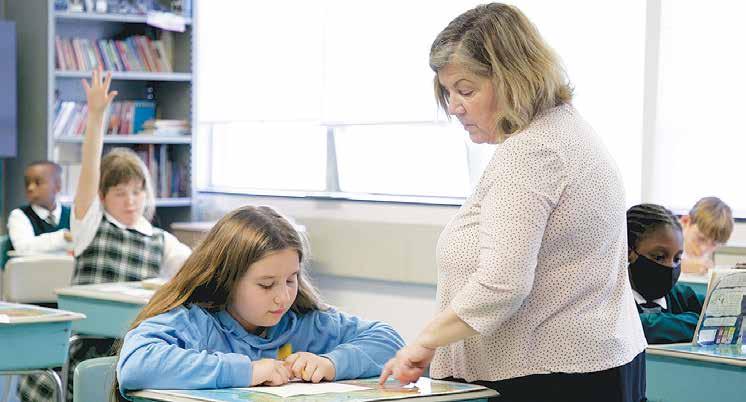

In my more than two-and-ahalf decades at The Anchor, I always hearken back to my days at St. Anne School in Fall River each time Catholic Schools Week rolls around.
I attended the large edifice on Forest Street, that, with its land, covered two full city blocks. And for a little tyke like me, it seemed like a mansion surrounded by school yards (three), a Little League field, and a beautiful front lawn, which was off limits to terrors like me.
I attended St. Anne’s for nine years in the 1960s, kindergarten through grade eight, as did my brother and many of my cousins on my mom’s side. My mom attended the school as well, and probably some of her siblings, too. Before the enormous school building was built on Park Street, there were two previous St. Anne’s Schools: one in a parish basement/hall and another in a larger red brick building.
The large Park Street school, with its light tan or beige brick walls, opened in 1925.
I’m filled with fond memories of good old St. Anne’s, for the most part. The times that weren’t so pleas-
ant were the times that my mischievousness landed me in hot water (not literally, of course).
I found the wooden floors that creaked and the classrooms and large auditorium warm and comforting, as I found most of the Dominican Sisters and priests with strong French-Canadian roots who taught there.
It was a place of which to be proud. I mean, what other elementary school had its own baseball field and league? Come on, it doesn’t get any better than that!
But, like many big old buildings, there were those places where little minds and bodies would hesitate to enter.
While the first three floors, each of which seemed to be the length of a football field, were full of life and warmth, it was the fourth floor that was dark and sinister to a young, mischievous imp. Up there, the classrooms were empty because
the lower floors easily handled the student population.
I admit, there were times when I would sneak up the southern stairwell to the ”haunted house” and dare myself to make the trek across the seemingly endless hallway to the north side stairs. With only natural light filtering in and the louder than usual floor creaks, it got the heart pumping. It was possible to make it across, as long as I didn’t stop along the walk — or should I say sprint? I didn’t do it often, but the times I did, sometimes with an accomplice, were exhilarating. And I don’t believe I was ever caught. I usually got in trouble for things less dubious.
The symmetry of the old building was perfect. Three warm inviting levels sandwiched between the haunting top floor and the eerie basement, where the rest rooms were.
I found that level even more daunting than its counterpart four
stories up. We all went to the rest rooms as a class — the girls in one large area and the boys in another. But once in a while Mother Nature called during class time and we would venture solo to the dungeon. I think I found it more eerie because it was below ground.
I recall once being asked to go down to the sink in the basement to empty a plant from our classroom that had long since given up its ghost. I took the withered weed and emptied the contents and was immediately smacked in the face by a sickening odor from the waterlogged, decomposing plant. My bologna sandwich almost reappeared on that one. And it only added to the creepiness of that floor. But it was still good fun.
It was sad to see the big old building close in 2006 and eventually be razed. My dad, who was retired then, often walked to watch the building come down, and he sneaked onsite and claimed a brick for me. (The nut doesn’t fall far from the tree.) I still have the relic.
Hmm. I wonder if it was from the fourth floor.
davejolivet@anchornews.org


